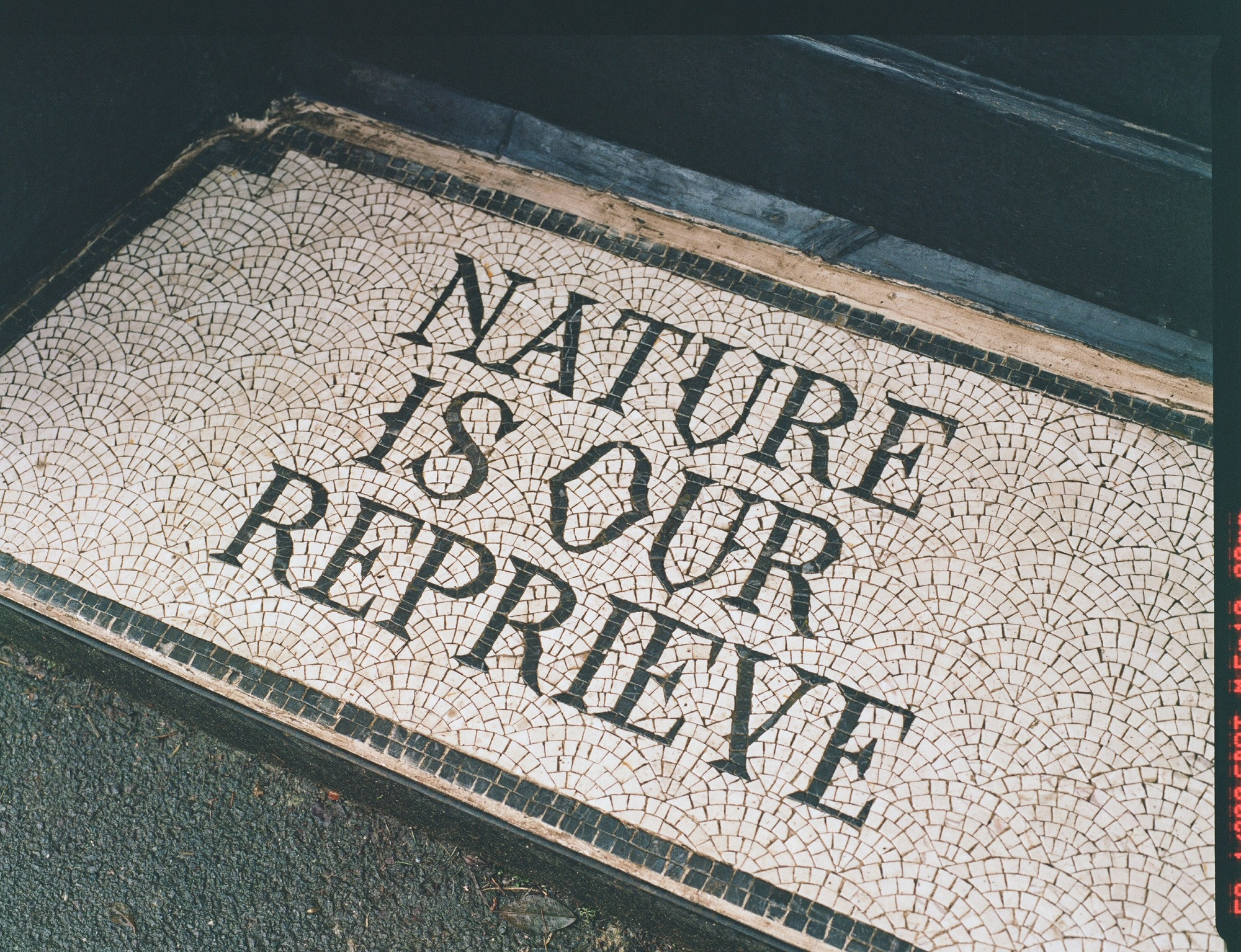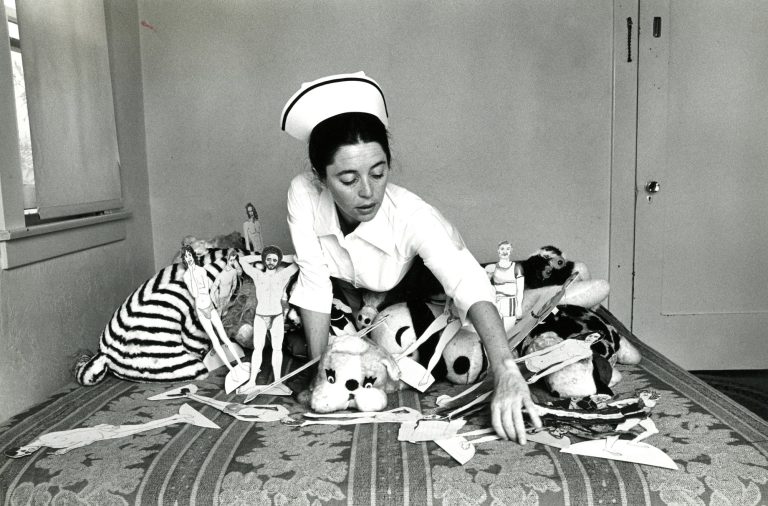
The Sun Is Shining Here
Published: 2024/01/23
Updated: 2024/02/15
LAURA MULLEAVY: I don't even know where to start this conversation, so I could do a hard start and ask the burning questions –
ELEANOR ANTIN: Go for it.
Tell me a little bit about what you're working on right now.
I have a whole string of exhibitions coming up in New York, in Switzerland and Great Britain. I like saying Great Britain. It's not new work really, but it's not old work either. It's work that I've been working on constantly through the years.
I guess I wanted to start the conversation with how you became an artist.
I always knew I was an artist from when I was a little kid. I didn't, of course, know then precisely what an artist was. I knew only simply that you painted or drew. My sister was a musical prodigy. So she was the musician in the family, and I was the artist who painted and drew. I also acted – I was going to acting classes and I always enjoyed doing that a great deal. I'm kind of a ham.
When I was a little girl, I played with paper dolls all the time and I made up stories about their careers and I continued their stories every day. It wouldn’t be a different story – they would continue, and they had long love affairs with other dolls and then I had to follow the other dolls and how the affairs were affecting them…it got kind of complicated, but it was very easy for me. I don't know why. I just fell right into it and they were a part of my life. I just lived the lives of my paper dolls and they became part of my work.
Do you feel that you are a storyteller with your art? And as you're a writer too, do you think that informs your visual storytelling capacity or they kind of go hand in hand in a way?
I do think of myself as a storyteller. I tell stories and I believe these stories, not that they're actually true, but my stories and my life are all wrapped up with them.
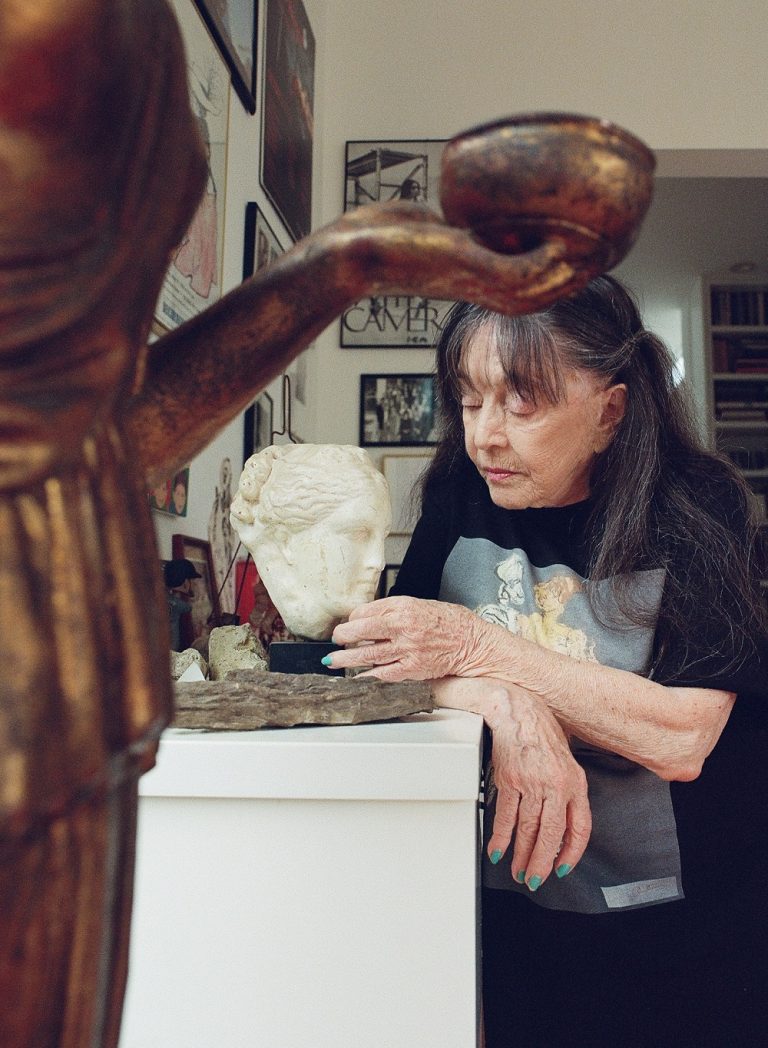
Photography by Carissa Gallo.
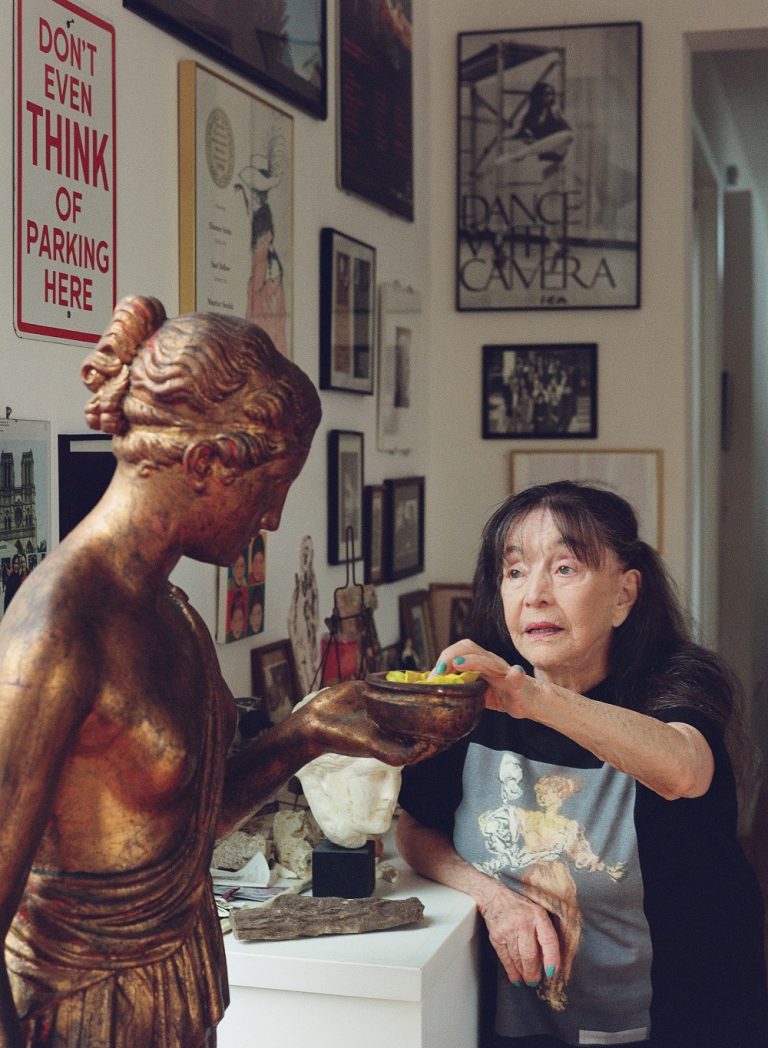
Tell me about humour. Do you find humour a part of your work? Do you feel that you are humorous in your approach to art at all?
I think there is a strong comic urge in my work, but there's also a personal confessional part too.
[How does that play into your understanding of feminism?] Do you feel that exploring feminism over the years has been something that you've navigated in different ways in different eras, or is that something that was just a byproduct of the time you were working in, or the specific art piece?
It is a very important part of my worldview and my work. I was brought up in a political family; I was brought up by a bunch of communists and serious political people and politics was part of my life and feminism. I also always saw [my feminism] as political, as well as extremely personal.
One of my questions was to ask you if feminist ideology that was brought in early to your life, so it was something you were exposed to as a younger child? Can you tell me about [Antin’s performance art character] Nurse Eleanor, and the origin and meaning behind it? How did it come to be, and what does it mean to you today?
I don't even remember how she came to be. The days that I was the nurse, I lived that day as that character in my life, my real life – whatever that means. I was living as that character for a number of hours during the day. And then when I took off my characters clothes, I was back to Eleanor and I went back to my life.
What's the most unexpected thing that's happened to you through your work?
I spent my life worrying that I worked so hard at my work, like all artists do, and worrying that it would be forgotten. I am very fortunate that that is not the case – that I made a place for myself in the art history of my time. Certainly the avant-garde art history of my time, I succeeded in that. I'm very pleased with that. I felt it was important and I didn't have to worry – I did make a place for myself as a feminist performance artist.
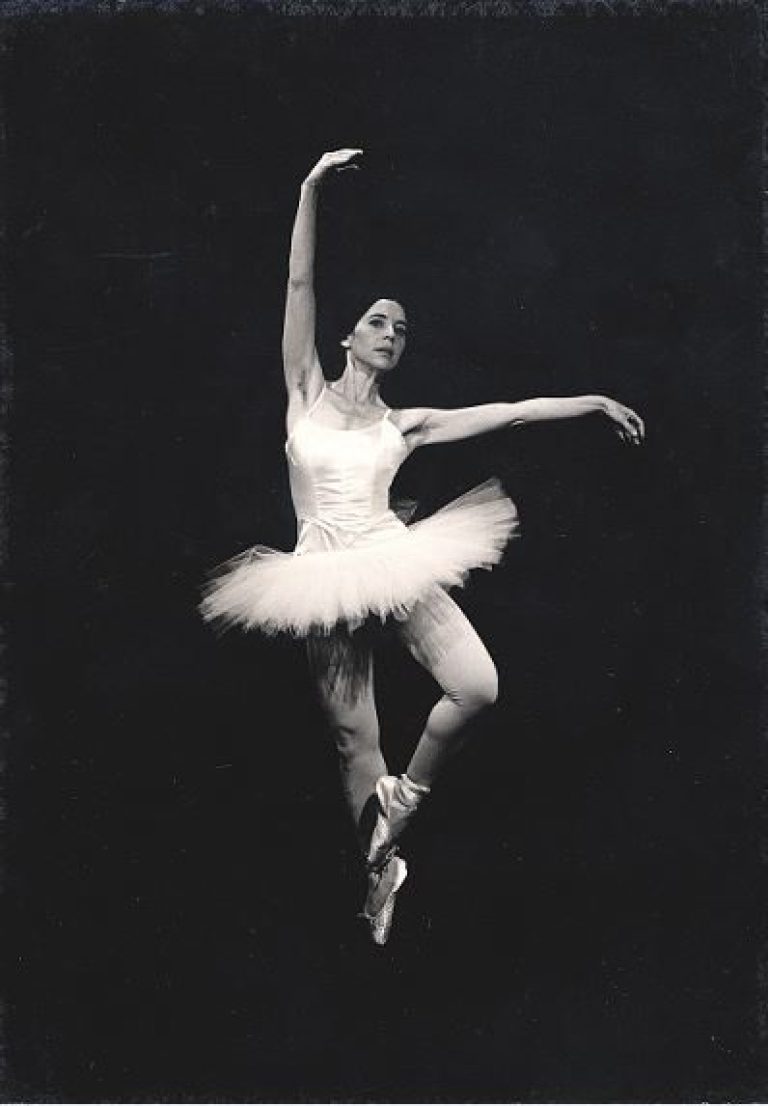
'CAUGHT IN THE ACT' 1973. Courtesy of DIANE ROSENSTEIN Gallery, Los Angeles.
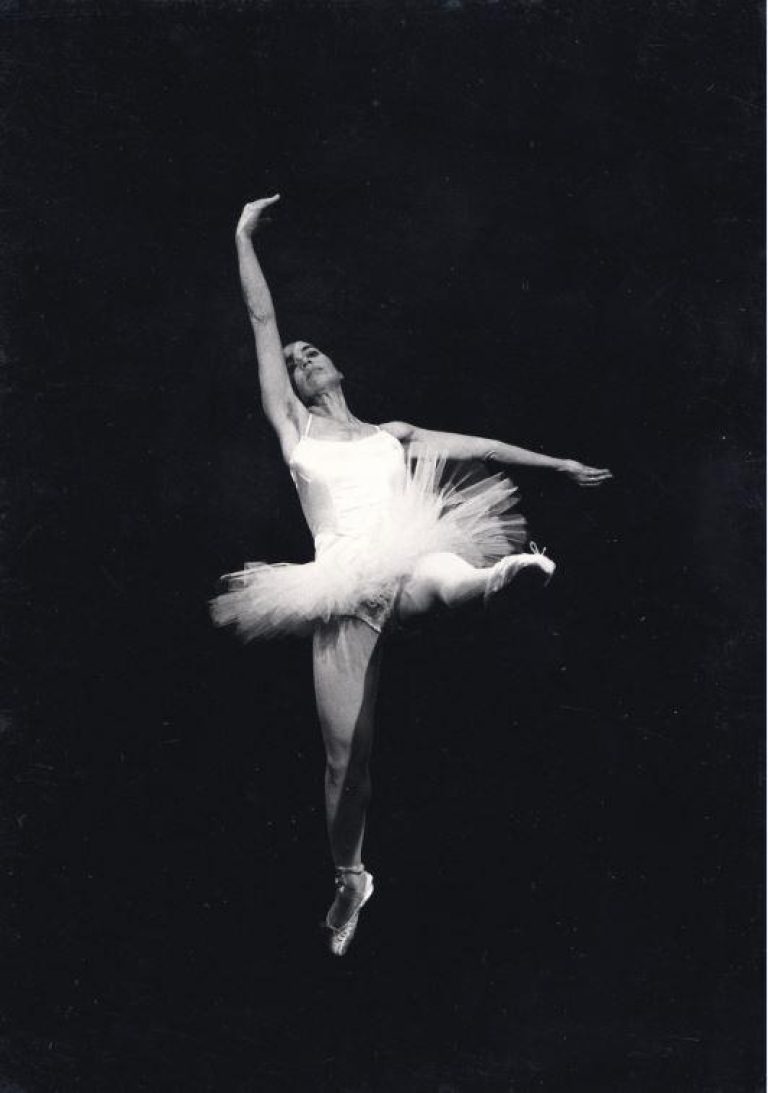
I often think about art that I'm exposed and how it affects me. And I think your process of documentation within the art itself expresses some of that in an interesting way, or maybe it's just a benefit of it.
But we get to live the process of your art through the way it's been presented and with the images and the repetition of it [on film]. And that's so fantastic for us as viewers sometimes we lose our thoughts or our memories, but we have these great moments that are captured to revisit. So those days are recorded, and maybe you won't ever remember what you were thinking on any of those days, but we as an audience have those images to remind us that they happened.
I've read that you're a mother. How has that affected you and what you make?
Well, I'm very fortunate in that I'm extremely close to my son and my grandson and I speak to them every week. And I mean, they call me all the time and I call them. And the addition of the grandson is interesting, a whole new thing. Usually people [my age] aren't that fortunate that they're that close to a younger age group.
Is there anything you ever look back at and say, ‘oh, I would change that?’ Or conversely, ‘I wouldn't change it, because it was the square that got me to the circle?’
No, that thought doesn't bother me. I did what I did and it was right when I did it. Right now, I'm glad that I made it a place for myself in art history. That fear that I had all the time, that I would be forgotten, is not so. I lived the life I wanted to live and I'm satisfied with it.
I love that.
Oh, well, I was very fortunate in that I had a fabulous love life. My husband and I, David Antin, the poet and writer, it was a relationship made in heaven. That's all I can say. I don't believe in heaven – I don't know what that exactly means – except that we were both very fortunate. We were only unfortunate in that he died before me. That's the only tragedy in my life that I am aware of.
And [all the other] people I love, their ashes are buried in my garden and I planted over them. So I know where the people I loved are, under which bush or plants or tree.
Trees speak to each other, and they have a whole language. So I imagine the people that you've lost that are underneath the soil are communicating somehow with those trees, and with you still. That's a beautiful way of having life grow on.
That's so special. I can talk to them through that and yeah, I have had a very fortunate life. As I said, I've done what I wanted to do. The only thing was that David should have come along with me, shouldn't have died. That's the one tragedy in my life. Oh, he was amazing.

'THE TWO ELEANORS' 1973.
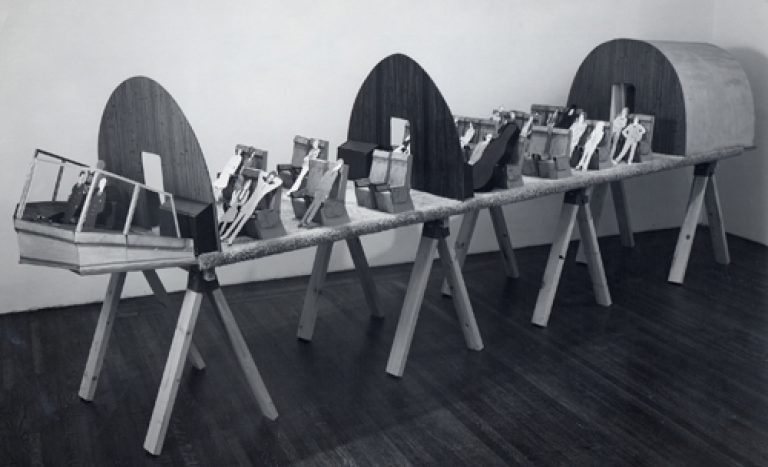
'THE NURSE AND HIJACKERS SET' 1973.
I will ask one final question for you. Is there something that you feel inspired by right now?
I wouldn't say I feel inspired, but I am 88. I feel I'm not waiting with bated breath. I'm waiting calmly to die. It used to be scary to think of that, but not anymore: I'm rather calm about it. I'm aware of the fact that I've had what I would call a marvellously happy life. I hope that if my health deteriorates while I'm waiting calmly to die, I hope I have the strength to do what I have planned to do, which is to make sure that is to end it when I think I'm ready to go. And hopefully I will be able to do that.
The one thing I don't want to do to die in my sleep, because I want to be aware at that moment that I'm dying. I don't know why, but it seems to me that that's in a very important moment and I should be there to experience it. I don't think it'll be scary. Maybe it will be. I don't know. But I'm not thinking of it that way. And I assume that if I deteriorate, I will be able hopefully to calmly help myself along. These are not scary thoughts.
I know. I read a group of cardiologists did some brainwave studies on people that were having cardiac arrest and they studied what the brain function was doing in those moments where people were passing. And I don't know what it means, but they said the brain activity is completely different. I wouldn't know how to express it in scientific terms. But in my head, it's just like what you would picture, just like an explosion of light. But it does seem like it's a real moment, or it can be a real moment.
Yes.
But then we are all particles, right? Energy from stardust and we end up back in our soil and our air and our trees. I'm so grateful to have been able to speak for you with you for this hour. And I'm glad that someone called us up and said, would we be able to do this? And I feel like this is artistically very, a full circle for me. My sister and I are huge fans.
I look back at teachings within art history and I was like, gosh, there's very few women artists that I was taught about, even at [my alma mater] The University of California, Berkeley, just very few. And it's so unfortunate. But I do know that it was your work that really sparked something in us. I appreciate so much what you have made and I'm grateful to talk to you about it.
Thank you, my dear. Thank you. I'm very fortunate to be very close with my son and my grand-kids. Very fortunate. I told you the one tragedy in my life was that David died before me. That's a big tragedy. But I've survived it.
Thank you. Thank you so much. Have a good afternoon.
You too, my dear. Good evening. The sun is shining here. Bye love.
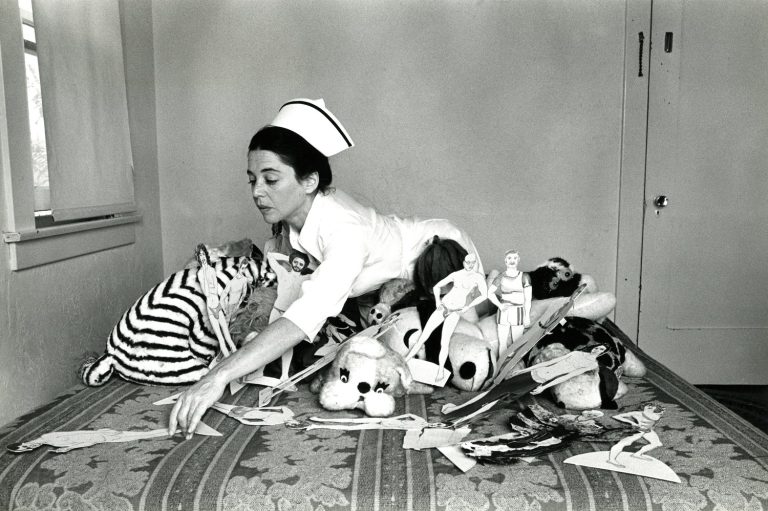
'ADVENTURES OF A NURSE' 1975, copyright ELEANOR ANTIN. Courtesy of JOSEPH BELLOWS GALLERY, La Jolla California.
Related Articles

Liberty 150 x150 curated by Leith Clark: The Founder Interviews

Liberty 150 x150 curated by Leith Clark: The Founder Interviews

Liberty 150 x150 curated by Leith Clark: The Founder Interviews

Liberty 150 x150 curated by Leith Clark: The Founder Interviews
